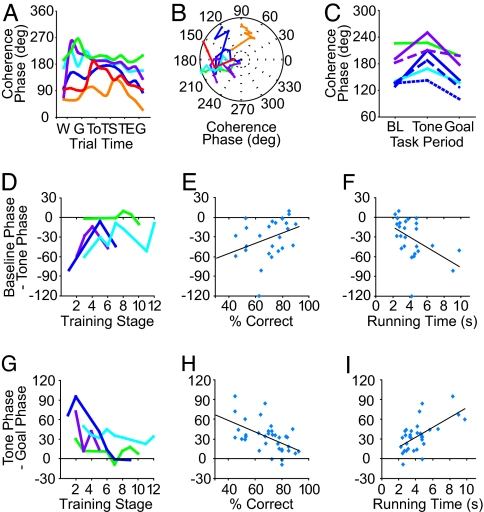Fig. 5.
The phase of striatal–hippocampal theta coherence is modulated during learning. (A) Average phase angles plotted for the six rats whose percent correct and running times are shown in the same color codes as in Fig. 3. Coherence phase was calculated by subtracting the striatal phase from the hippocampal phase and converting the angles to a 0–360° range. (B) Phase angles during the posttone period for the first to last training sessions for individual rats are shown from center to periphery of the polar plots. (C) Coherence phase angles measured at three task periods during individual sessions up to asymptote of running speed for rats S17 (1 session), S18 (2 sessions), S23 (3 sessions), and S36 (1 session). (D–I) Amounts of change in coherence phase angles from pretrial baseline period to posttone period (D–F) and from posttone period to pregoal period (G–I) during T-maze training for the four learners. Changes in coherence phase angles from pretrial baseline to posttone period were significantly correlated with learning stage (R = 0.46, P < 0.05) (D) and with running time (R = −0.48, P < 0.02) (F) but not with percent-correct response (R = 0.35, P = 0.079) (E). Tone-to-goal changes in coherence phase angles were significantly correlated with all behavioral measures: stage (R = −0.53, P < 0.01) (G), percent-correct response (R = −0.55, P < 0.001) (H), and running time (R = 0.61, P < 0.001) (I).

